Abstract
This study was performed to see if adherent cell-derived toxic oxygen metabolites contribute to the suppression of mononuclear cell blastogenic responses in Hodgkin's disease. Peripheral blood mononuclear cells from 10 patients with Hodgkin's disease were stimulated in culture with the mitogen PHA in the presence of the prostaglandin inhibitor indomethacin and the antioxidants catalase or vitamin E. Patient lymphocytes showed significant increases in PHA-induced proliferation at all PHA doses when cultured with indomethacin. Further augmentation of lymphocyte proliferation was achieved with the addition of catalase or vitamin E to indomethacin in the culture system. The increases in proliferation seen on culture with these agents were greatest in patients with more depressed initial PHA responses. When adherent cells were removed before culture, the agents no longer facilitated increases in proliferation. These data suggest that abnormal lymphocyte proliferative responses seen in Hodgkin's disease may result in part from the excessive production of toxic oxygen metabolites as well as prostaglandins by adherent cell populations.
Full text
PDF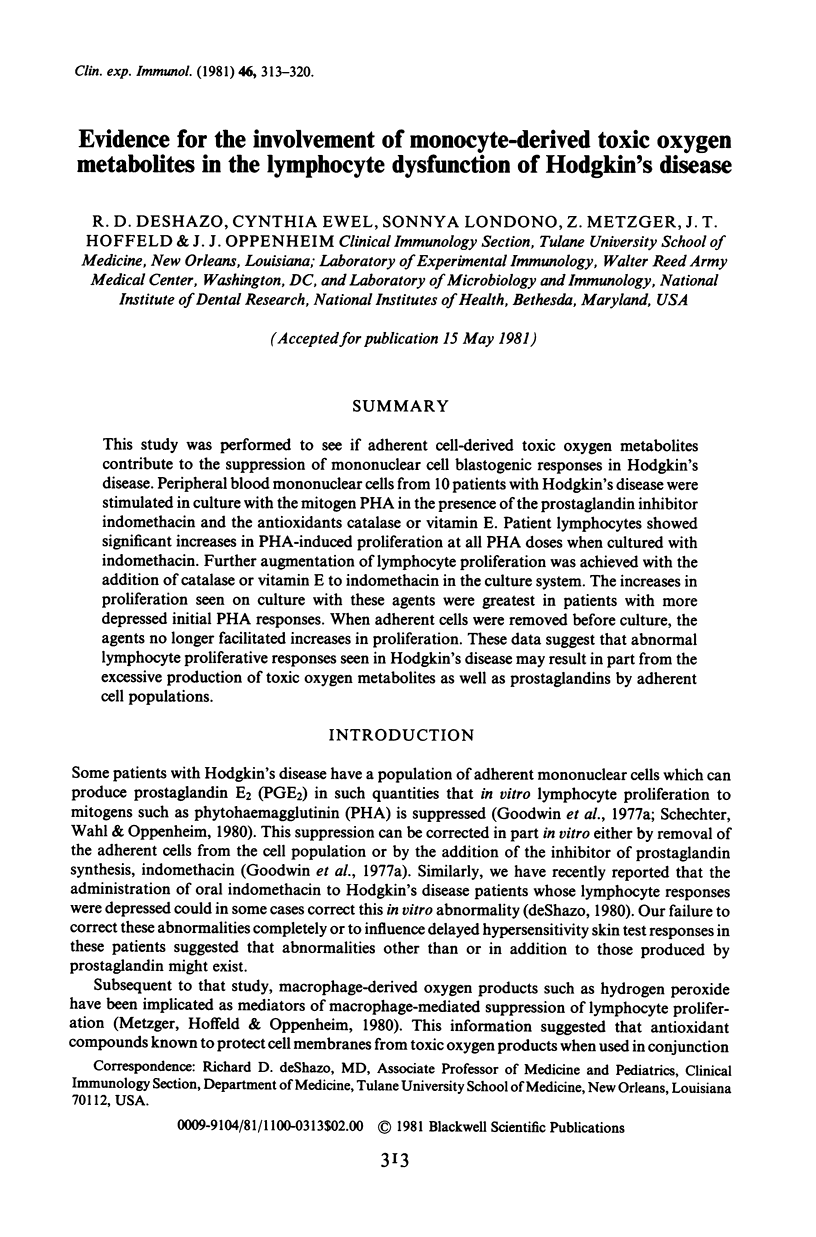
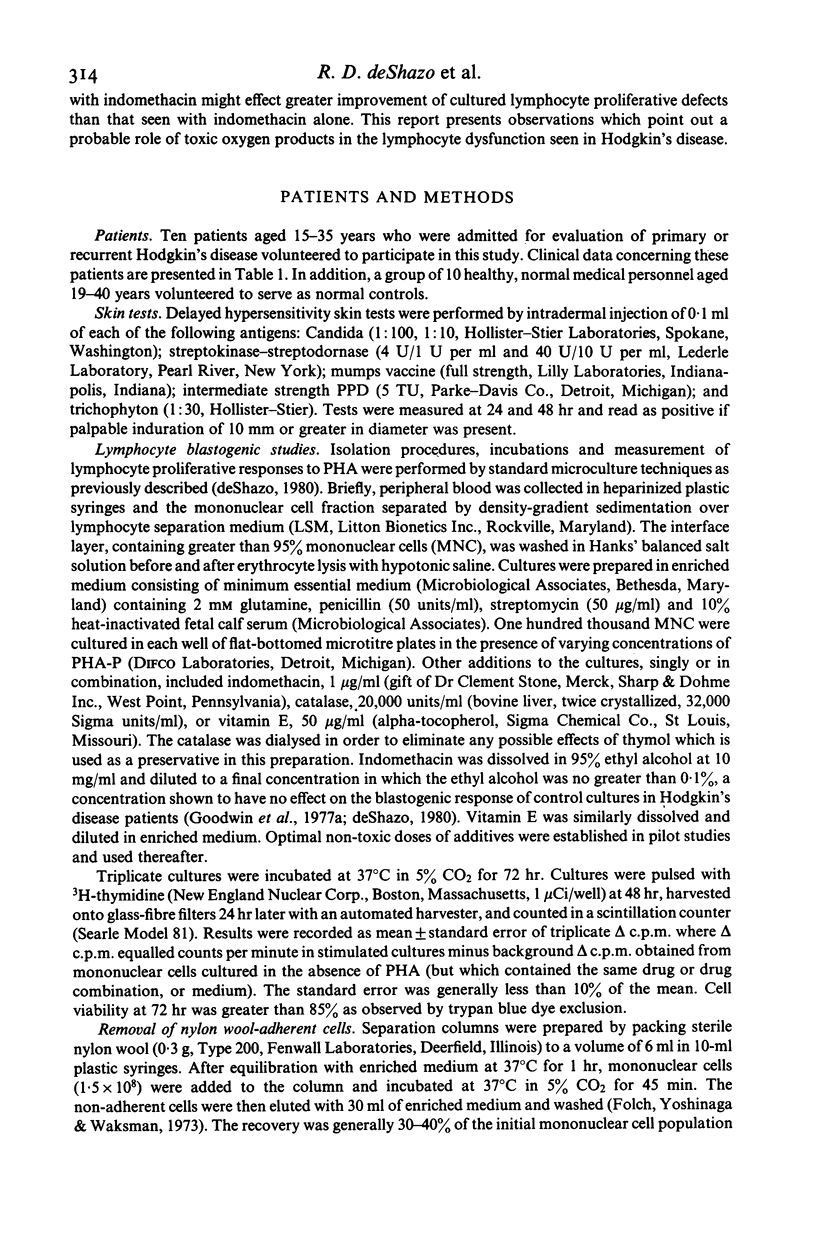
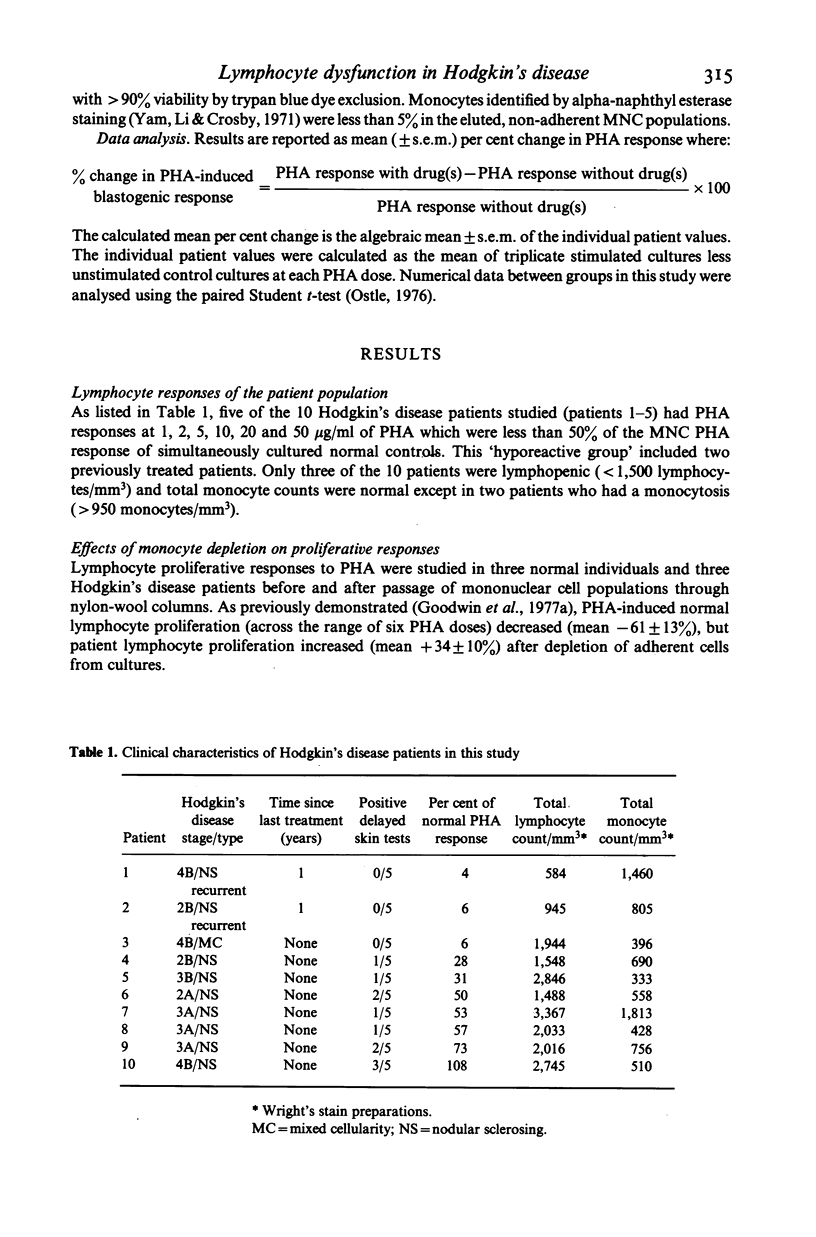
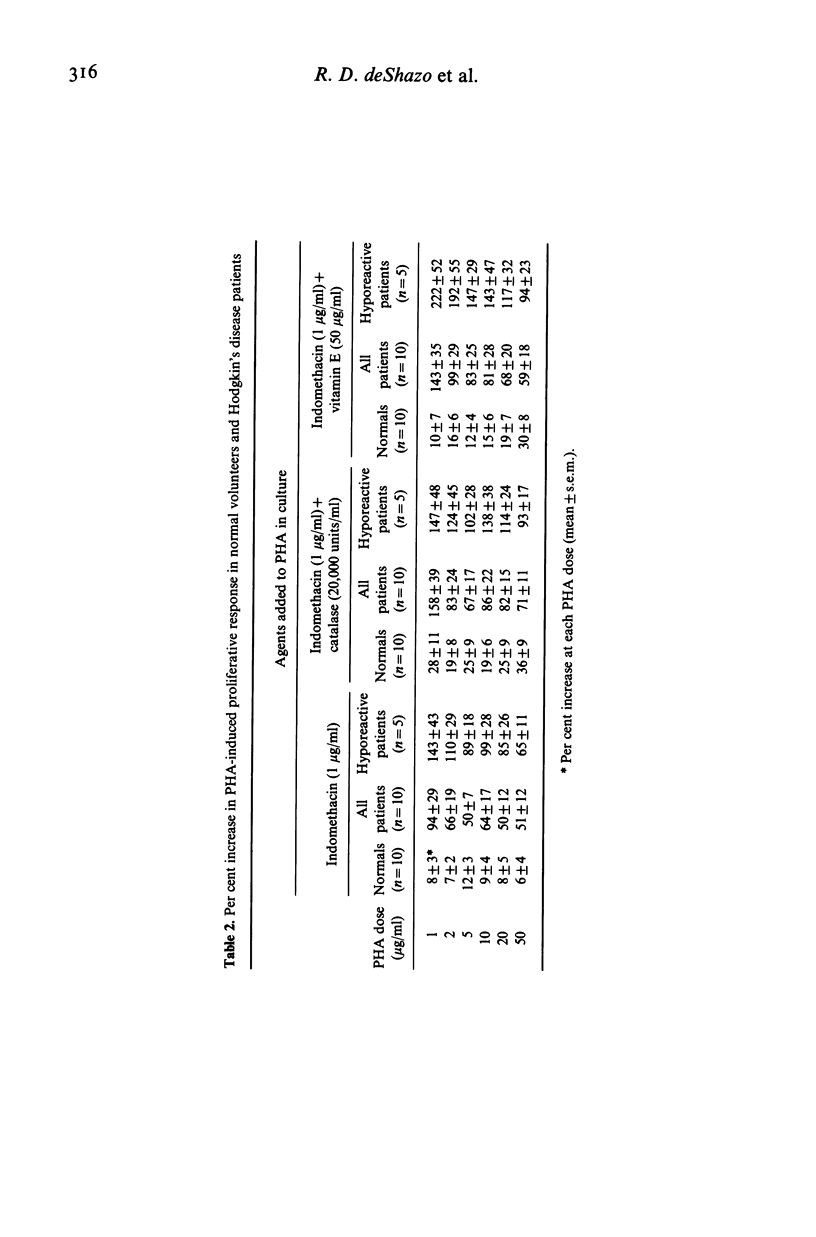
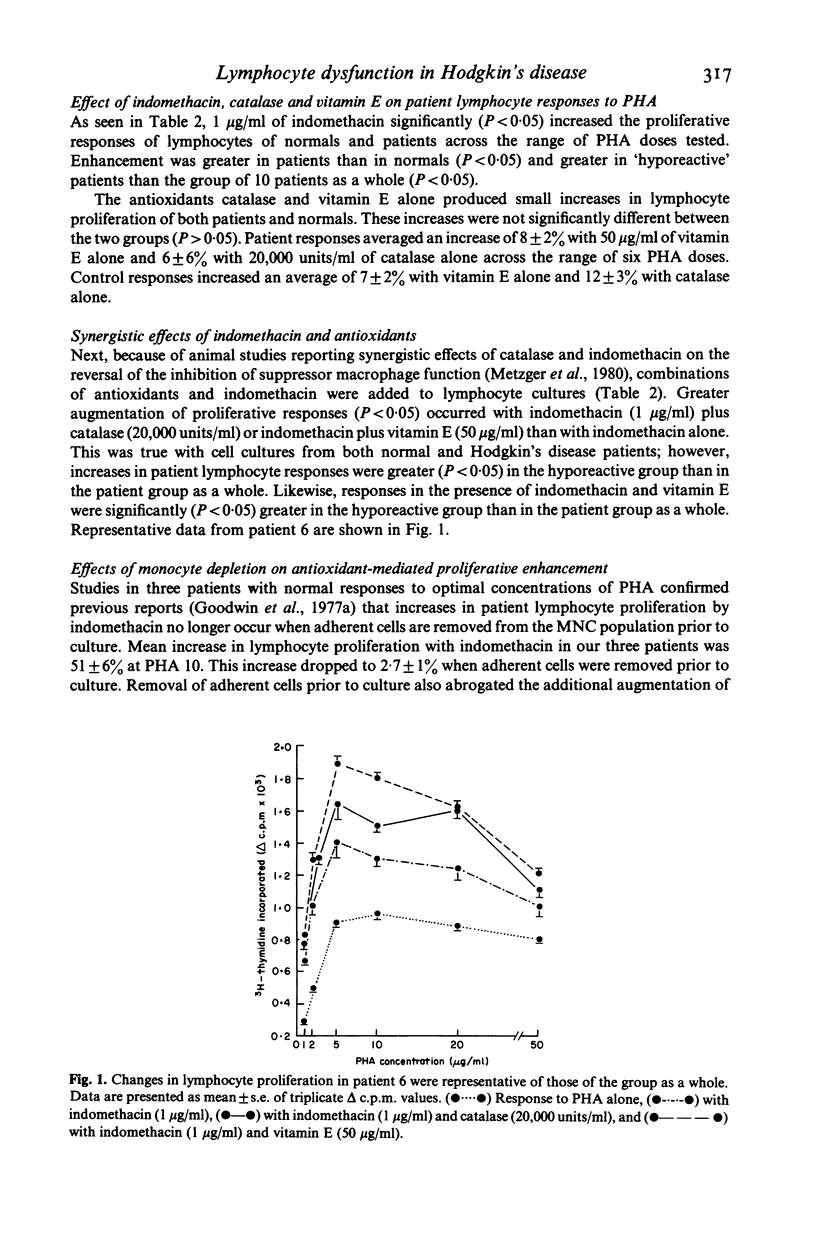
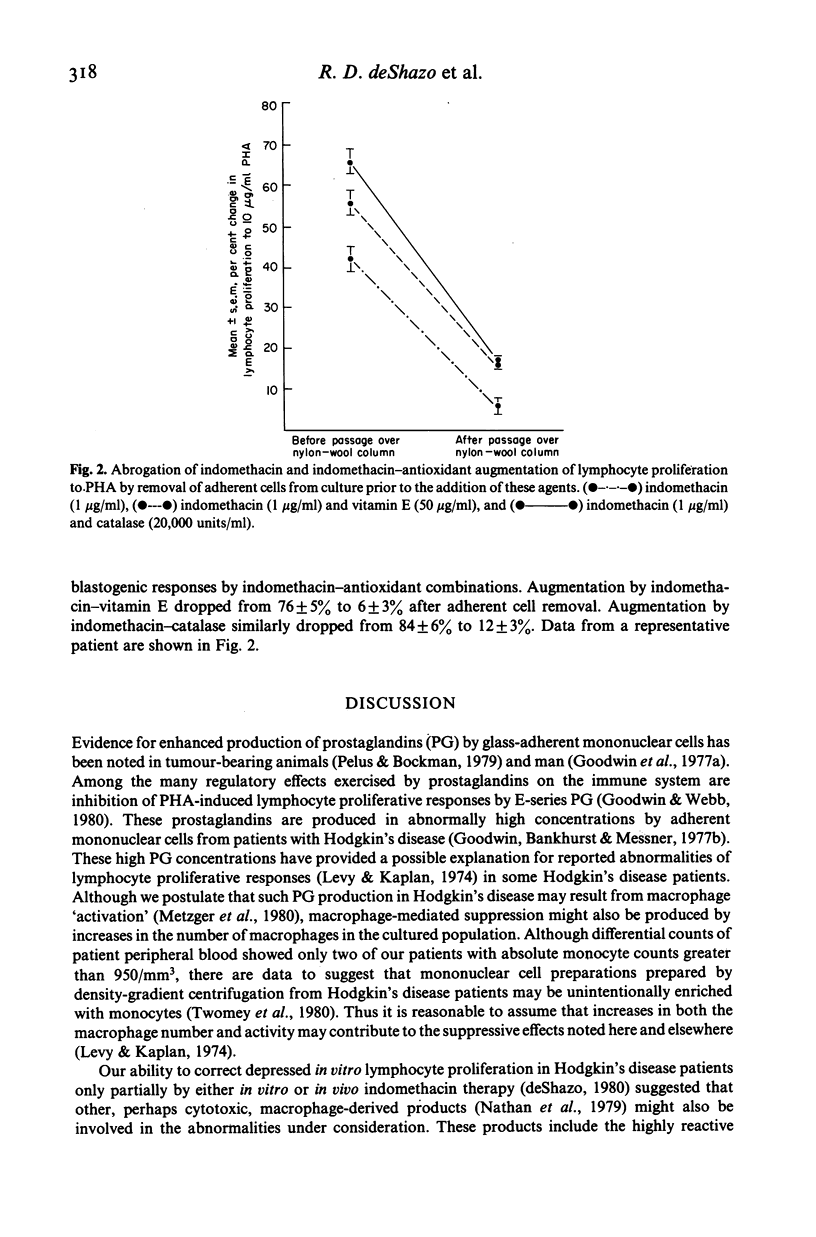
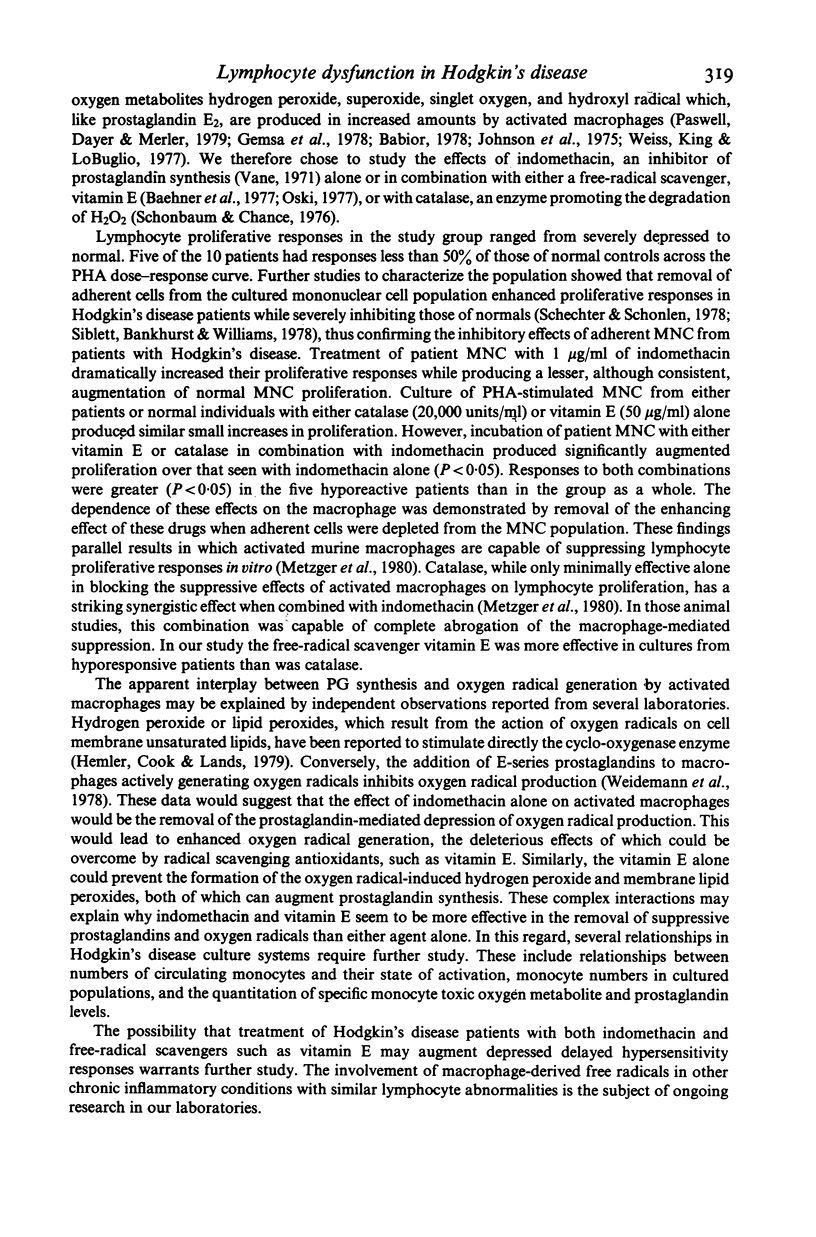
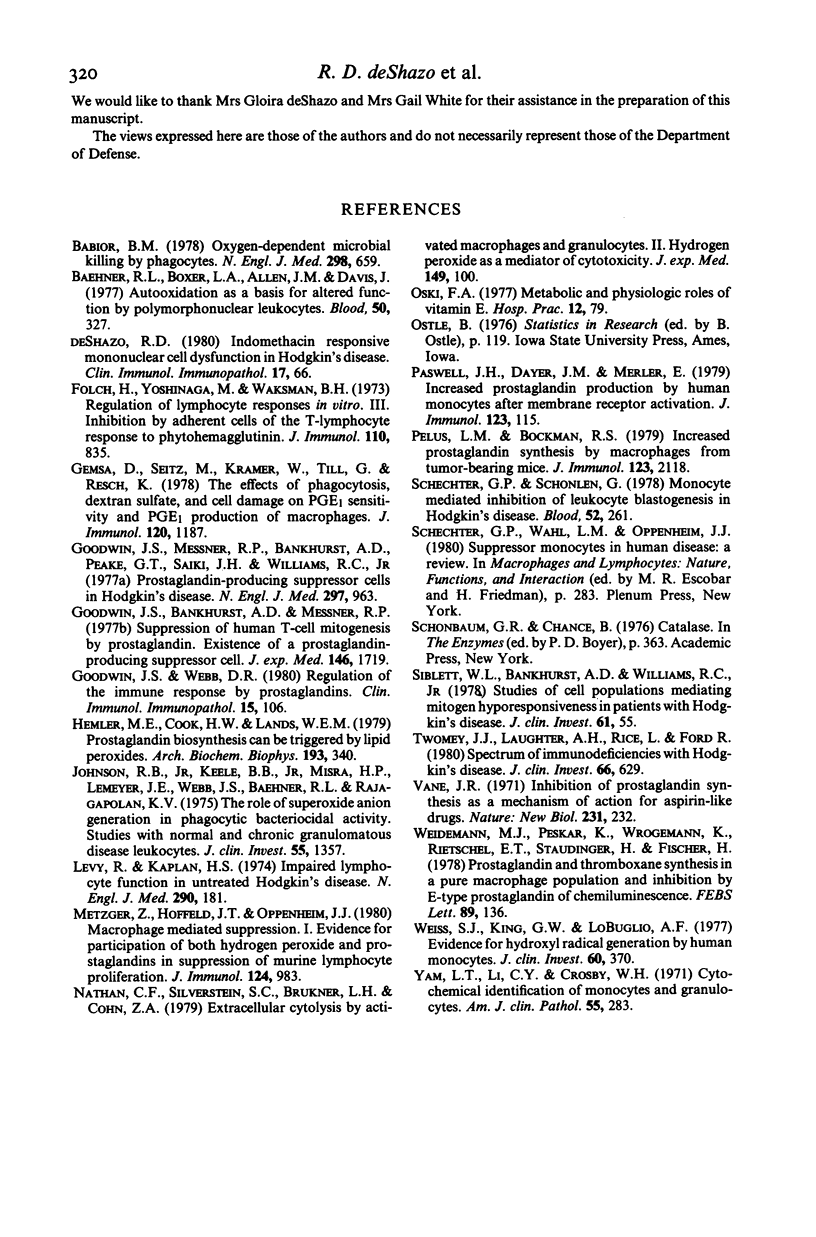
Selected References
These references are in PubMed. This may not be the complete list of references from this article.
- Babior B. M. Oxygen-dependent microbial killing by phagocytes (first of two parts). N Engl J Med. 1978 Mar 23;298(12):659–668. doi: 10.1056/NEJM197803232981205. [DOI] [PubMed] [Google Scholar]
- Baehner R. L., Boxer L. A., Allen J. M., Davis J. Autooxidation as a basis for altered function by polymorphonuclear leukocytes. Blood. 1977 Aug;50(2):327–335. [PubMed] [Google Scholar]
- DeShazo R. D. Indomethacin-responsive mononuclear cell dysfunction in Hodgkins disease. Clin Immunol Immunopathol. 1980 Sep;17(1):66–75. doi: 10.1016/0090-1229(80)90074-4. [DOI] [PubMed] [Google Scholar]
- Folch H., Yoshinaga M., Waksman B. H. Regulation of lymphocyte responses in vitro. 3. Inhibition by adherent cells of the T-lymphocyte response to phytohemagglutinin. J Immunol. 1973 Mar;110(3):835–839. [PubMed] [Google Scholar]
- Gemsa D., Seitz M., Kramer W., Till G., Resch K. The effects of phagocytosis, dextran sulfate, and cell damage on PGE1 sensitivity and PGE1 production of macrophages. J Immunol. 1978 Apr;120(4):1187–1194. [PubMed] [Google Scholar]
- Goodwin J. S., Bankhurst A. D., Messner R. P. Suppression of human T-cell mitogenesis by prostaglandin. Existence of a prostaglandin-producing suppressor cell. J Exp Med. 1977 Dec 1;146(6):1719–1734. doi: 10.1084/jem.146.6.1719. [DOI] [PMC free article] [PubMed] [Google Scholar]
- Goodwin J. S., Messner R. P., Bankhurst A. D., Peake G. T., Saiki J. H., Williams R. C., Jr Prostaglandin-producing suppressor cells in Hodgkin's disease. N Engl J Med. 1977 Nov 3;297(18):963–968. doi: 10.1056/NEJM197711032971802. [DOI] [PubMed] [Google Scholar]
- Goodwin J. S., Webb D. R. Regulation of the immune response by prostaglandins. Clin Immunol Immunopathol. 1980 Jan;15(1):106–122. doi: 10.1016/0090-1229(80)90024-0. [DOI] [PubMed] [Google Scholar]
- Hemler M. E., Cook H. W., Lands W. E. Prostaglandin biosynthesis can be triggered by lipid peroxides. Arch Biochem Biophys. 1979 Apr 1;193(2):340–345. doi: 10.1016/0003-9861(79)90038-9. [DOI] [PubMed] [Google Scholar]
- Johnston R. B., Jr, Keele B. B., Jr, Misra H. P., Lehmeyer J. E., Webb L. S., Baehner R. L., RaJagopalan K. V. The role of superoxide anion generation in phagocytic bactericidal activity. Studies with normal and chronic granulomatous disease leukocytes. J Clin Invest. 1975 Jun;55(6):1357–1372. doi: 10.1172/JCI108055. [DOI] [PMC free article] [PubMed] [Google Scholar]
- Levy R., Kaplan H. S. Impaired lymphocyte function in untreated Hodgkin's disease. N Engl J Med. 1974 Jan 24;290(4):181–186. doi: 10.1056/NEJM197401242900402. [DOI] [PubMed] [Google Scholar]
- Metzger Z., Hoffeld J. T., Oppenheim J. J. Macrophage-mediated suppression. I. Evidence for participation of both hdyrogen peroxide and prostaglandins in suppression of murine lymphocyte proliferation. J Immunol. 1980 Feb;124(2):983–988. [PubMed] [Google Scholar]
- Nathan C. F., Silverstein S. C., Brukner L. H., Cohn Z. A. Extracellular cytolysis by activated macrophages and granulocytes. II. Hydrogen peroxide as a mediator of cytotoxicity. J Exp Med. 1979 Jan 1;149(1):100–113. doi: 10.1084/jem.149.1.100. [DOI] [PMC free article] [PubMed] [Google Scholar]
- Oski F. A. Metabolism and physiologic roles of vitamin E. Hosp Pract. 1977 Oct;12(10):79–85. doi: 10.1080/21548331.1977.11707210. [DOI] [PubMed] [Google Scholar]
- Passwell J. H., Dayer J. M., Merler E. Increased prostaglandin production by human monocytes after membrane receptor activation. J Immunol. 1979 Jul;123(1):115–120. [PubMed] [Google Scholar]
- Pelus L. M., Bockman R. S. Increased prostaglandin synthesis by macrophages from tumor-bearing mice. J Immunol. 1979 Nov;123(5):2118–2125. [PubMed] [Google Scholar]
- Schechter G. P., Soehnlen F. Monocyte-mediated inhibition of lymphocyte blastogenesis in Hodgkin disease. Blood. 1978 Aug;52(2):261–271. [PubMed] [Google Scholar]
- Twomey J. J., Laughter A. H., Rice L., Ford R. Spectrum of immunodeficiencies with Hodgkin's disease. J Clin Invest. 1980 Oct;66(4):629–637. doi: 10.1172/JCI109898. [DOI] [PMC free article] [PubMed] [Google Scholar]
- Vane J. R. Inhibition of prostaglandin synthesis as a mechanism of action for aspirin-like drugs. Nat New Biol. 1971 Jun 23;231(25):232–235. doi: 10.1038/newbio231232a0. [DOI] [PubMed] [Google Scholar]
- Weidemann M. J., Peskar B. A., Wrogemann K., Rietschel E. T., Staudinger H., Fischer H. Prostaglandin and thromboxane synthesis in a pure macrophage population and the inhibition, by E-type prostaglandins, of chemiluminescence. FEBS Lett. 1978 May 1;89(1):136–140. doi: 10.1016/0014-5793(78)80539-0. [DOI] [PubMed] [Google Scholar]
- Weiss S. J., King G. W., LoBuglio A. F. Evidence for hydroxyl radical generation by human Monocytes. J Clin Invest. 1977 Aug;60(2):370–373. doi: 10.1172/JCI108785. [DOI] [PMC free article] [PubMed] [Google Scholar]
- Yam L. T., Li C. Y., Crosby W. H. Cytochemical identification of monocytes and granulocytes. Am J Clin Pathol. 1971 Mar;55(3):283–290. doi: 10.1093/ajcp/55.3.283. [DOI] [PubMed] [Google Scholar]


